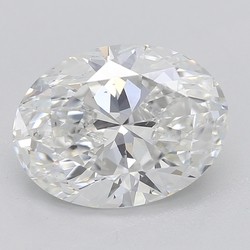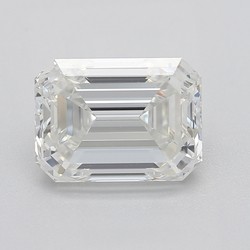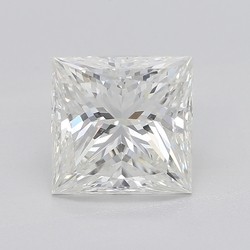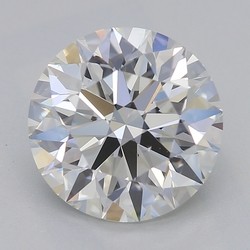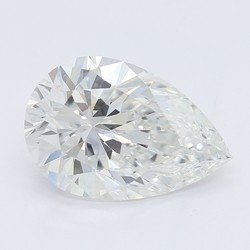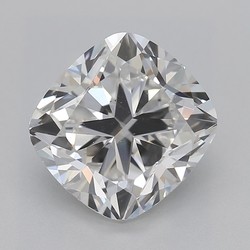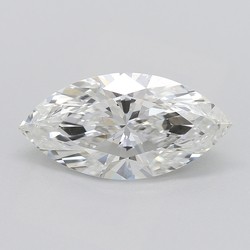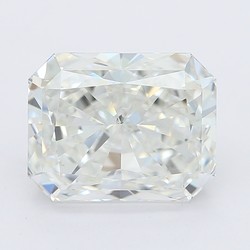Eco-friendly diamonds: The perfect blend of beauty and sustainability
Key Takeaways
- Natural diamonds are formed by intense and oppressive conditions deep in the earth’s mantle, and then typically extracted from kimberlite or alluvial deposits.
- Natural diamonds, despite their environmental impact, contribute greatly to the GDP of the country they’re found in, meaning they form a key part of citizens’ livelihoods. The environment is disturbed during the mining process. Recent operations have begun collaborating with local groups to offset their impact.
- Lab Created Diamonds are grown in labs, where their conditions and creation are controlled by humans using a combination of HPHT and CVD.
- Lab Created Diamonds are seen as a ‘solution’ to many of the negative connotations of the natural diamond industry. While not directly interfering with the environment, the energy required to produce a lab created diamond is significant, which clouds their ‘eco-friendly’ tag.
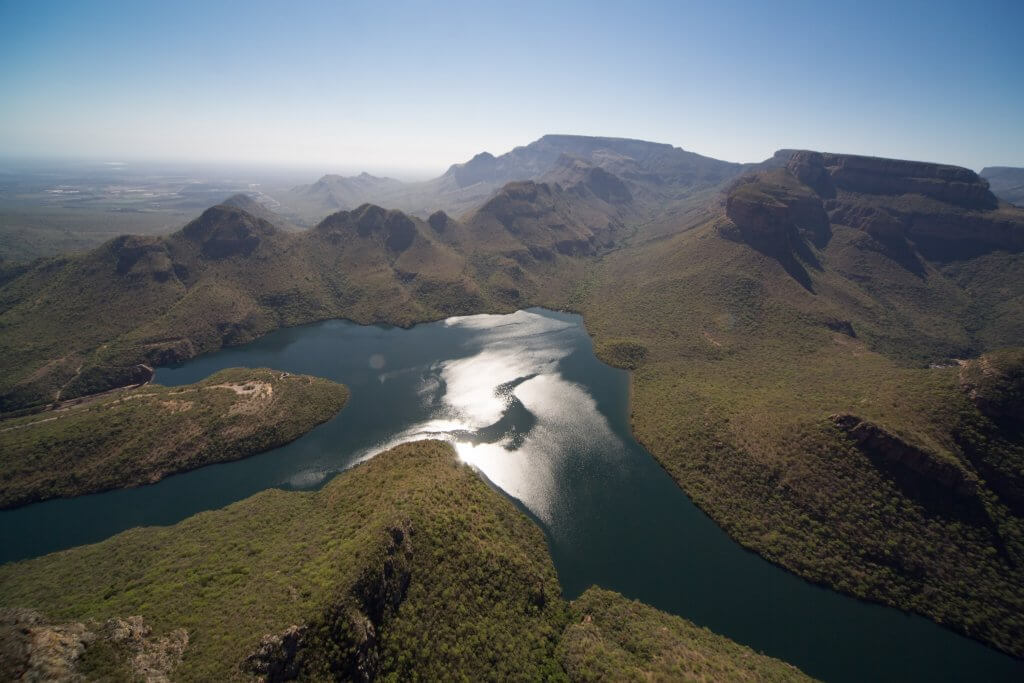
Investing into a diamond means investing into the route it took from the earth’s mantle to the jeweler’s table. And, while the world-famous slogan ‘A diamond is forever’ might be a little catchier (and marketable) than that, it is something every shopper looking to make the best choice possible should consider.
Nobody wants an unethical diamond. We’ve talked a lot about the importance (impossible to overstate) of understanding where your diamond came from and, more importantly still, who was affected along the way. And, of course, that the diamond in question represents a strong and beneficial industry – one that supports communities, and creates innumerable livelihoods.
But the human aspect comes hand in hand with another vital consideration: the environment.
We say hand in hand because, in any part of the world – whether rural or urban – countless people depend on the health and careful balance of the environments around them.
As consumers, we’ve all got a lot better at thinking about the sorts of products and practices we support. We shop closer to home when we can, pay more to support ethical supply chains, and make choices based entirely on the question of eco friendliness.
The diamond industry poses two choices to shoppers. One is natural, the other synthetic – and both have totally different impacts on the environment…
- Natural vs Lab Created Diamonds
- Natural Diamonds
- Energy Usage
- Environmental Impact
- Lab Grown Diamonds
- Energy Usage
- Environmental Impact
- ‘Eco’ Terminology
- Is a Natural Diamond Worth it?
- Is a Lab Grown Diamond Worth it?
- Our Summary
Natural vs Lab Created Diamonds
The modern diamond world is a tale of two halves.
On the one hand, you have natural diamonds – gemstones who have found beauty in the unlikeliest of places: deep in the earth’s mantle, under such ferocious, oppressive conditions that carbon atoms crystalize into rough diamond. Eventually, the heat and weight give way to volcanic eruptions; the stones are pushed close to the earth’s surface and, eventually, mined from pipes of solidified kimberlite magma, or sifted from alluvial deposits in riverbeds and the ocean floor. Wild journeys for wild diamonds.
On the other hand, however, the world has now made room for lab grown diamonds – stones that represent the mirror image of natural diamonds, despite the fact that they found their origins in conditions that represent the opposite of the turbulent world beneath our feet: in rooms, where every element is painstakingly controlled by humans.
Right off the bat, it’s impossible not to compare the two. The existence and popularity of lab grown diamonds is predicated on the fact that they hold up in direct, side-by-side comparisons.
But lab grown diamonds aren’t popular just because they look indistinguishable from natural diamonds. They have risen to prominence because of the way in which they are marketed to consumers – or, more specifically, the supposed benefits that investing in a lab grown diamond offers to us.
So often, we come across marketing tactics for lab-grown diamonds that are centered on the idea that they represent the ultimate alternative to risking an unethical choice.
Not only do they avoid the difficult business of traceability – keeping track of who was responsible for mining them and under what conditions, particularly as they travel further and further from their country of origin – but they also avoid the environmental issues associated with diamond mining.
Natural Diamonds
Diamonds are typically found in kimberlite pipes that reach deep into the earth or alluvial deposits, either on land or, in the case of Namibia, in the ocean floor. While plenty of artisan miners are able to work on a small scale, sifting through alluvial deposits for rough diamonds, the bulk of the world’s diamond reserves stem from large scale, open pit mining.
Kimberlite, an igneous rock created by underground volcanoes many, many years ago, needs to be extracted and transported to a facility where the rough diamond can be extracted from the rock. It is hard work, even with advanced machinery, and kimberlite mines can be in operation for decades before the supply of rough diamond has been officially exhausted.
As you will no doubt expect, both mining and recovering alluvial deposits inevitably mean interfering with natural environments, although the extent is entirely dependent on the approach used. While artisanal miners may eventually have to reroute water sources – flooding some areas and parching others – their work can go on without posing a considerable threat to the surrounding environment. But, to meet the world’s demand, it’s inevitable that the emphasis will fall on the large, open-pit mines of Russia, Canada, South Africa, Botswana, and Australia.
Energy Usage
At the world’s big diamond mines, much more energy is required – along with water, certain chemicals
There have been many estimates for the among of energy required to mine one carat of diamond – although it’s not always the best way to compare natural and lab grown diamonds, since extracting rough material from rock is less predictable than creating it.
In general, the number of kWh required to mine one carat of diamond falls within the range of 50kWh – 150 kWh, although some mining companies have reported higher or lower figures.
This is just for one carat – and, considering the world’s largest producers of rough diamond are exporting millions of carats each year, it’s no secret that the diamond industry does consume a significant amount of energy.
There are also additional factors to consider, such as fuel for transport vehicles. In Russia, for instance, some of the biggest mines are accessible only by plane, and this also accounts for the energy involved in mining. There are, undoubtedly, issues that need to be addressed, just as there are in a wide range of other industries.
Environmental Impact
Energy usage has its own impact on the environment, but what about the impacts of clearing entire areas of land, creating massive open pit mines, and transporting people, earth, and rough diamond in and out of the area, every day of the year?
There is no denying that diamond mining does impact the environment. Even in Canada, where their diamond industry is subject to some of the strictest environmental regulations in the world, researchers have detected noticeable impacts on the surrounding environment. The caribou and grizzly bear populations, along with some aquatic life, have been impacted in the past twenty years.
When you look at the issue head on, however, the bigger picture gets missed.
The diamond sector is no stranger to negative attention. When news of the conflict diamonds saturating the global market back in the late twentieth century became common knowledge, for instance, a lot of minds were changed – suddenly, diamonds were no longer beautiful and romantic, but tied to crime, greed, and tragedy.
But the last twenty years or so have seen tremendous change. From the near-completed eradication of conflict diamonds to a widespread shift toward ethical practices, new opportunities, support for communities, economic renewal, and environmental concern, the diamond sector has grown far beyond its original form. This is, after all, the only way to create a solid foundation for a sector that will continue to prove profitable and valuable for entire economies.
There are many, many instances of corporation and collaboration between the industry, and the environment. In Russia, ALROSA are working to protect local reindeer populations; in South Africa, mining group De Beers are working on the largest translocation of elephants in history; in Canada, mines are working directly with aboriginal communities to protect wildlife according to knowledge that can only be gained through generations of living from and with the land; in Sierra Leone, licensed diamond mining is bringing income into communities still living in environments that bear the scars of the civil war.
Lab Diamonds
First off, it’s important to temper your expectations of lab grown diamonds. In order to create an object that looks and behaves just like diamond, you need more than a petri dish and a futuristic laboratory. To make a gem quality diamond synthetically, you need a combination of high pressure and high temperature (HPHT), or a reaction known as chemical vapor distillation (CVD). Controlled explosions involving carbon, and ultrasound, can also create diamond, but these processes aren’t used for creating gemstones.
Whether you’re looking at HPHT or CVD, the process takes considerable time – and energy. Lab grown diamonds take weeks to form, and require many, many hours of power in the process.
Energy Usage
Diamond labs require a lot of energy to create even a single diamond. It’s not a case of combining two elements and waiting for a diamond to grow – it’s a case of deploying some complex manufacturing processes, creating temperatures above 1000°F, and exerting tremendous pressure. Running a diamond growing lab is a 24/7 process – and that creates a pretty large carbon footprint.
In either case, a lot of energy is required to produce even a single carat of diamond. Including cutting, as much as 1100 kilowatt hours are required to create a 1 carat lab grown diamond when heat and pressure are used. When chemical vapor is used, this can be as much as 1,700 kilowatt hours.
In either case, that’s more than the average American home uses in a month, according to the US Energy Information Administration’s statistics.
Renewable energies can be used but, in most of the cases we’ve looked at, they’re not. A lot of these labs are located in countries with relatively low capacity for renewable energy at this point in time, and one California-based company reported that they would be buying solar energy credits.
In other words, as of this point in time, the lab grown diamond industry still consumes a lot of energy. They’re not forming under a heat lamp, or growing on strings suspended in jars. It’s a heavy, intensive industrial process designed to compete with the sheer force of nature.
Environmental Impact
Lab grown diamonds are considerably less impactful on the surrounding environment, although their existence is not totally neutral. Creating diamonds aboveground still required metals like nickel and gases like methane, which means that their footprint still extends beyond the laboratory’s doorway.

Eco Terminology
One of the main, concrete facts lab grown diamonds have in their favor is that they are sustainable – and the term ‘sustainability’ is often seen as pretty much synonymous with environmentally friendly, even though the terms can, in some uses, represent different things.
We can create more and more, and replace every single lab grown diamond sold, relatively easily. It’s not sustainable in the same way that, say, an apple tree or tomato plant is sustainable, but lab grown diamonds are replaceable, nonetheless.
Natural diamonds are not a sustainable resource, because of the fact that there is (and always was) a finite amount of diamond in the earth, and each and every day that mystery figure goes down a little more. Nevertheless, that does not immediately mean that the diamond sector is destroying the earth.
Alongside ‘sustainable’, growing diamonds in synthetic environments is also described as ecofriendly, but this really offers no concrete information. It’s highly marketable to consumers who are worried about the consequences of their purchases, and immediately makes lab grown diamonds sound like the preferable choice over natural diamonds.
It’s pretty interesting to thing that the diamond industry represents one of the few places where ‘natural’ can be put forward as a negative, rather than a positive. And, with the amount of energy consumed within one of these diamond labs, we wonder how long it will be before that gets turned around in the consumer’s eye.
Yes, when you sit down to list the ways in which both options impact the environment, natural diamonds impact the environment more. Digging mines, diverting water, bringing electricity into remote parts of the world, driving trucks and planes in and out of the area, operating machinery, and powering mor facilities for workers – even emitting dust into the surrounding landscape – all take a toll, but…
Is a Natural Diamond Worth It?
Yes, and not simply because they are beautiful objects. They are also essential to the stability, growth, and development of many countries…
Sure, the argument often goes that diamonds are a luxury item, not a necessity. Why not, for the sake of sustainability, forget about them – or, if we really can’t do that, why not trade them in for an item that looks, feels, and sparkles like the real thing, without requiring us to invade the earth’s surface?
The answer is pretty simple: because diamond mining accounts for significant portions of many country’s gross domestic product. In Botswana, for instance, diamonds represent a little under 35% of GDP.
There is nothing sustainable about placing an embargo on an industry that provides so many livelihoods, generates so much tax that countries can develop vital infrastructure, and creates so many opportunities for companies and charities to help preserve and protect vulnerable environments.
While it may sound counterintuitive to defend invading the environment with the argument that we can put profits toward repairing it, it actually makes perfect sense when you also consider the livelihoods and opportunities created along the way.
In Botswana, the overwhelming majority of product exports need to be mined: diamond (more than 60%), nickel, copper, and gold. This means that, for massive portions of the country’s population, there is very little money to be made from, say, agriculture, which represents less than 5% of the country’s exports. Plus, many of the alternatives to diamond mining pose their own concerns for the environment.
Not only that, but the diamond industry creates more and more opportunities for improvement – opportunities that confront stereotypes, and ensure career development for groups who were (and, in some places are) often marginalized. In Pretoria, South Africa, Marietjie Reynecke’s influence has prompted one mine to recycle up to 98% of its water, as well as funding research into tracking local wildlife.
In India, the industry is working to safeguard thousands of farmers facing the worst water crisis in the country’s history.
Is a Lab Diamond Worth it?
We don’t think so. Their primary appeal, aside from their low cost, is the fact that they are ‘ecofriendly’. This term means very little, and draws attention away from all he good being done by the natural diamond industry around the world.
There’s still a big divide between what the average, first-time diamond buyer knows about diamonds, and what those working within the industry know. In many ways, the past hangs over the industry – sometimes, to the detriment of entire countries, such as Sierra Leone, where remarkable work has been done since the Civil War to transform the industry into something licit and beneficial – and that makes it easier for alternatives to rise to popularity with a few simple terms like ‘sustainable’ and ‘ecofriendly’.
Diamond mining can (and does) have negative consequences on the environment. It is also part of a sector big and profitable enough to invest significant funds back into those environments – and the communities living and working within them. And, at the same time, to create opportunities for educating and employing new generations who can continue to ensure that the industry’s impact is a positive and sustainable one.
Lab grown diamonds are marketed as the ‘solution’ – a cheaper, more sustainable, and more environmentally responsible alternative to diamond. It’s also often promoted for the fact that it doesn’t rely on vulnerable communities being exploited, but these seems to be a big generalization – one that overlooks decades’ worth of development in country’s that once faced major issues relating to poverty and unemployment.
And, in countries with ailing economies, protecting vulnerable environments – environments that are essential to maintaining our planet’s delicate balance – becomes increasingly difficult.
Lab grown diamonds have much, much shorter supply chains, which means the wealth generated through this industry remains in a much tighter circle, and doesn’t reach the millions of workers involved in bringing real diamonds from the earth to the wider world.
Our Summary
Diamonds are a luxury. They’re beautiful, romantic, and extravagant objects that hold as much symbolic value as they do financial. And, as with any luxury item, there will always be an argument against them.
What makes the argument against natural diamonds more compelling are the benefits they offer to the consumer. If you buy a lab grown diamond, you don’t have to question the conditions it was mined in, or the people who were responsible for it, or the environment that suffered as a result, since the entire process took place in a sterile, controlled environment.
But being a responsible consumer isn’t as simple as picking the option that you don’t need to question – it’s about asking those questions in the first place.
This is what the whole topic of traceability is concerned with – and another reason why investing in a diamond is very different to investing in anything else. Being aware of the diamond industry as it is now, rather than before, is very important to your own peace of mind – and the continued health of an industry that generates income for countless individuals, and numerous governments around the world, from Africa to Russia and North America.
We’re not convinced by the value that lies in lab grown diamonds, and worry that many investors will one day realize the misconceptions that led to them thinking they were a better, more ethical, and justifiable choice than natural diamonds.
One positive outcome from their current novelty may be that more and more mining companies work embrace a greater level of sustainability within their operations, from renewable energies to environmental safeguarding and restoration.
Nevertheless, even with the industry as it is at this point in time, there are still many benefits to supporting diamonds, and allowing them to have the positive impact that they can and do have around the globe.
At WillYou.Net, we are committed to ensuring that shoppers not only find the best investment possible for their engagement ring, but that they are able to walk away feeling confident that their choice was ethical, and socially and environmentally responsible. Our Jewelry Store Locator searches through our own, hand-picked network of jewelers that have met our high standards, to ensure shoppers are able to make the most informed choice possible.
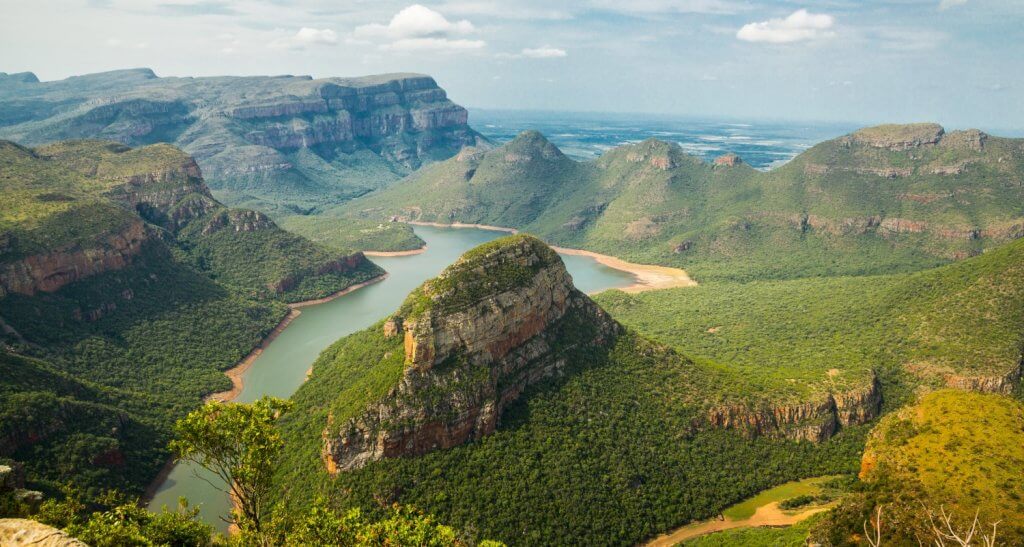
Mar 17, 2022 By Willyou.net
The Kimberley Process, Blood Diamonds, and Why We Should Avoid Them

Dec 24, 2021 By Willyou.net
What is a Conflict Free Diamond? 10 Questions You’ll Want Answered Before You Buy

